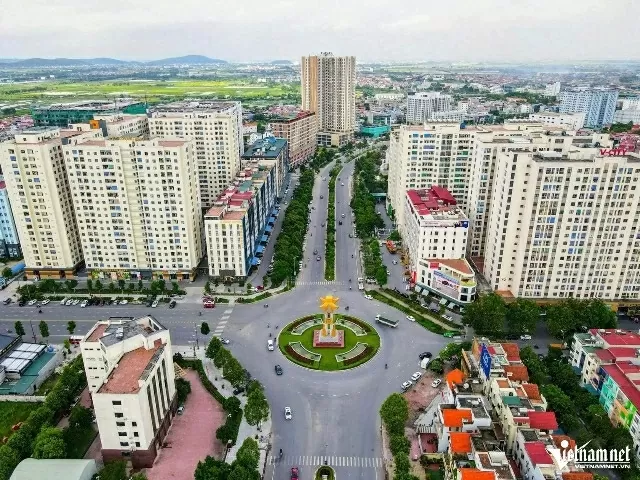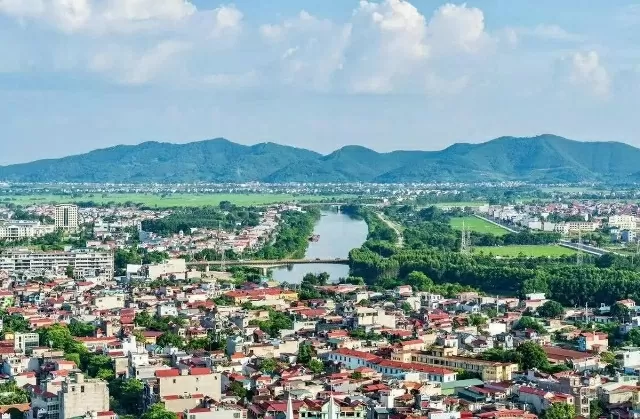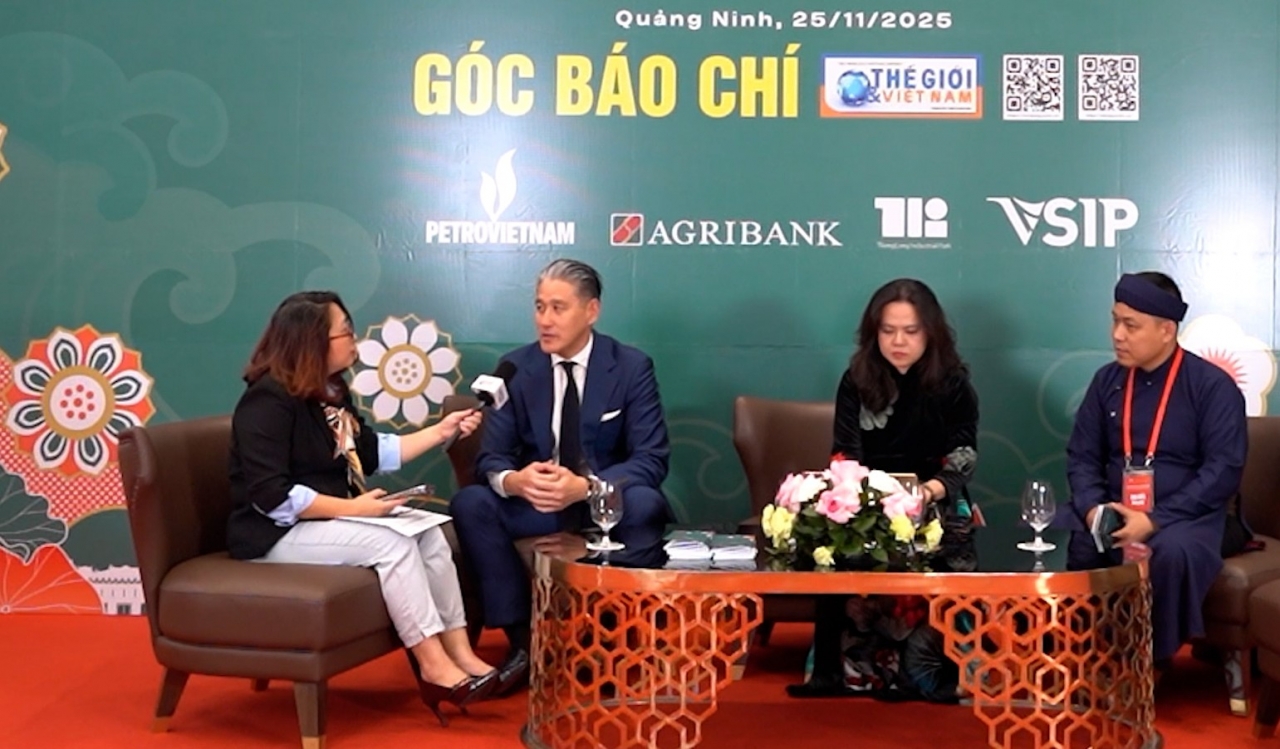
Merger of Bac Ninh and Bac Giang: Emerging as a new growth engine and major manufacturing hub of Vietnam
Latest
 |
| Merger of Bac Ninh and Bac Giang: A corner of Bac Ninh City, Bac Ninh Province. (Source: Vietnamnet) |
Located along the industrial development axis of the Hanoi Capital Region, Bac Ninh stands out as a hub for high-tech growth. Meanwhile, Bac Giang is known for its large-scale industrial zones, increasingly complete transport infrastructure, and strong potential for urban breakthrough.Merger of Bac Ninh and Bac Giang: A corner of Bac Ninh City, Bac Ninh Province. (Source: Vietnamnet)
At a time when economic centers are shifting toward more interconnected and concentrated models, this merger is seen as a move that will create a new economic growth pole, attract investment, and enhance production value.
A strategic step in economic development
In 2024, the Gross Regional Domestic Product (GRDP) of Bac Giang reached over VND 207 trillion, while Bac Ninh surpassed VND 232 trillion. Both provinces rank among the top in the country in terms of economic output.
With this combined economic scale, the newly merged Bac Ninh Province would rank fifth nationwide in GRDP, following only Ho Chi Minh City, Hanoi, Hai Phong, and Dong Nai.
Bac Ninh has established its strength in the electronics and high-tech industries, with the presence of multinational corporations such as Samsung, Canon, and Foxconn. This has made the province a key driver in attracting global supply chains.
Bac Giang, on the other hand, has vast land resources, a large labour force, and a tradition of high-tech agriculture, with renowned products like lychee and various agro-forestry goods.
The merger between the two provinces promises to create a comprehensive economic ecosystem, reducing transportation costs, enhancing competitiveness, and laying the foundation for a modern, sustainable regional economic development model.
This merger is not merely an administrative restructuring—it represents a strategic step in economic development.
Currently, both Bac Giang and Bac Ninh are major industrial centers, often referred to as the industrial capitals of Northern Vietnam, hosting numerous factories from leading global corporations.
 |
| Merger of Bac Ninh and Bac Giang: Quan ho folk singing was recognized by UNESCO as an Intangible Cultural Heritage. (Photo: WVR) |
The merger sets favorable conditions for the newly formed province to become one of Vietnam’s—and even the world’s—largest manufacturing hubs, helping to avoid fragmented, small-scale, unplanned, and inefficient production practices.
After the merger, the new Bac Ninh Province will consolidate industrial capabilities while accelerating the transition toward a knowledge-based and innovation-driven economy. The concentration of resources into key infrastructure projects—such as bridges, roads, seaports, and logistics centers—will serve as a catalyst for the province’s comprehensive development.
Beyond economic value, the unification of Bac Ninh and Bac Giang presents a significant opportunity to advance synchronized infrastructure development. Currently, with strategic projects like the Hanoi–Bac Giang Expressway and National Highway 1A, the transportation systems of the two provinces have already seen substantial investment.
Moreover, this improved infrastructure connectivity will not only support production but also boost cultural tourism—a sector with strong growth potential in the Kinh Bac region.
Thanks to their rich history and dense network of cultural heritage sites, the development of linked tourism routes—such as from Dau Pagoda (Bac Ninh) to Bo Da Pagoda (Bac Giang), or from Dong Ho folk painting village to various Quan ho folk song villages—could result in unique, attractive tourism products.
Notably, Quan ho folk singing, recognized by UNESCO as an Intangible Cultural Heritage, has the potential to become a distinctive cultural tourism brand for the region, attracting both domestic and international visitors.
The new Bac Ninh strives to become a centrally governed municipality
According to a report by the Department of Home Affairs of Bac Ninh Province, the merger of Bac Ninh and Bac Giang is consistent with the two localities' shared cultural traditions, customs, religious beliefs, and historical origins, as both were originally part of the former Ha Bac Province.
 |
| Merger of Bac Ninh and Bac Giang: A corner of Bac Giang city. (Photo: Nguyen Ke) |
The new Bac Ninh Province will have a total area of 4,718.6 km², a population of 3,619,433, and 99 commune-level administrative units. The political and administrative center will be located in Bac Giang City, the current capital of Bac Giang Province.
After the merger, the newly expanded Bac Ninh Province will continue striving to meet urban standards and criteria in its roadmap to become a centrally governed city. It currently meets 314.6% of the required natural area standard and 241.3% of the required population size standard set for centrally governed cities.
According to Secretary of the Bac Giang Provincial Party Committee Nguyen Van Gau, the two provinces share many similarities in customs, traditions, and culture, having a long-standing historical connection. After the merger, the new Bac Ninh will have significant potential for development.
Secretary of the Bac Ninh Provincial Party Committee Nguyen Anh Tuan confirmed that Bac Ninh is currently adjusting its provincial master plan to serve the construction of an airport and transportation links to Noi Bai International Airport and Hanoi.
In the coming period, both provinces must coordinate planning adjustments to ensure harmonized, interconnected, and synchronized infrastructure and development plans after the merger.
With these outstanding advantages, the new Bac Ninh is expected to emerge as a new growth nucleus, not only in terms of administration, but also as an economic, industrial, and urban center in northern Vietnam.
The goal of making Bac Ninh one of the four centrally governed municipalities is becoming increasingly realistic—marking a major step forward and demonstrating the province’s ambition for transformation and innovation in the new era.













